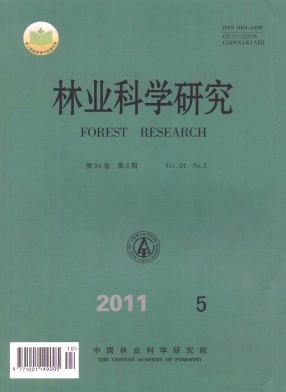Composition and Diversity of Arthropod Community in Phyllostachys edulis
Forest in Doming Mountain Forest Park of Zhejiang Province
-
1.
Research Institute of Subtropical Forestry, Chinese Academy of Forestry, Fuyang 311400, Zhejiang, China
-
2.
Zhejiang Museum of Natural History, Hangzhou 310000, Zhejiang, China
-
3.
Forest and Water Conservancy Bureau of Yuhang District, Hangzhou City, Hangzhou 311100 , Zhejiang, China
-
Received Date:
2010-06-17
-
Abstract
The structure and diversity are the important indexes of forestry ecosystem stability. During a systematic investigation in bamboo forest ecosystem from 2005 to 2007, 42~439 arthropod samples were obtained, which includes 511 species from 126 families of 17 orders. Lepidoptera insects occupied the largest number of species in the community, followed by Coleoptera and Diptera. The result indicated that, the community diversity of arthropod followed a obvious seasonal change pattern. The parameters of community composition, diversity and dominant concentration decreased in winter and summer when temperature was not suitable, representing double peaks with the season change. The peaks were in June and September separately. Based on the analysis of the functional groups, phytophagous group was predominant with species and population, followed by the natural enemy group, and neutral group was the least. In phytophagous group, the predominant species were not clear, and mosquitoes, Anopheles sinensis and Aedes spp. were predominant significantly in neutral group. In the group of natural enemies, predators including spiders and predacious insects were dominant.
-

-
References
|
[1]
|
徐天森, 王浩杰. 中国竹子主要害虫[M]. 北京:中国林业出版社,2004
|
|
[2]
|
Wang H J,Varna R V,Xu T S. Insect pests of bamboos in Asia . Beijing: International Network for Bamboo and Rattan,1998 |
|
[3]
|
徐天森, 王浩杰, 吕若清. 中国竹子害虫修订名录[J]. 浙江森林病虫, 1993 (4): 4-34
|
|
[4]
|
Singh P. Current status of pests of bamboos in India [M]// Rao I V R, Gnanaharan R, Sastry C B. Bamboos Current Research. Canada: Kerala Forest Research Institute, Peechi and International Development Research Centre, 1990: 190-194 |
|
[5]
|
Agarwala B K. Note on some aphids affecting economically important plants in Sikkim [J]. Indian Journal of Agricultural Sciences, 1981, 51(9):690-692 |
|
[6]
|
Nakahara J, Kobayashi F. Taxonomy and biology of bamboo leaf rollers (Pyraustinae) [J]. Bulletin of Forestry Experiment Station, 1963, 151: 45-52 |
|
[7]
|
张飞萍, 陈清林, 侯有明, 等. 毛竹林冠层与林下层节肢动物类群的关系[J]. 生态学报, 2005, 25(10): 2623-2628
|
|
[8]
|
张飞萍, 陈清林, 吴庆锥, 等. 毛竹林节肢动物群落的组成与结构[J]. 生态学报, 2005, 25(9): 2272-2283
|
|
[9]
|
张飞萍, 尤民生. 不同林分类型毛竹林节肢动物群落的多样性与稳定性[J]. 昆虫学报, 2007, 50 (1) : 31-37
|
|
[10]
|
方妙辉. 毛竹林节肢动物群落时间格局及其Fisher分类[J]. 竹子研究汇刊, 2006, 25(3): 15-18, 27
|
|
[11]
|
刘 怀. 毛竹竹冠节肢动物群落及竹裂爪螨、竹盲走螨生物学生态学研究 . 重庆:西南农业大学, 2001
|
|
[12]
|
王海香, 聂肖艳, 师光禄. 枣园节肢动物天敌群落时空结构和优势度分析[J]. 林业科学, 2010, 46(8): 168-173
|
|
[13]
|
宋延龄, 杨亲二, 黄永青. 物种多样性研究与保护[M]. 杭州: 浙江科学技术出版社, 1998
|
|
[14]
|
Shannon C E,Wiener W. The mathematical theory of communication [M]. Urbana: University of Illinois Press, 1963 |
|
[15]
|
Pielou E C. Ecological diversity [M]. New York: John Wiley & Sons, 1975 |
|
[16]
|
Simpson E H. Measurement of diversity[J]. Nature, 1949, 163: 688-688 |
|
[17]
|
Chesson P. Mechanisms of maintenance of species diversity[J]. Annual review of ecology and systematics, 2000, 31: 343-366 |
|
[18]
|
张飞萍, 尤民生. 不同管理措施毛竹林节肢动物群落的时序动态[J]. 福建林学院学报, 2007, 27 (1) : 7-10
|
-
-
Proportional views

-





 DownLoad:
DownLoad: